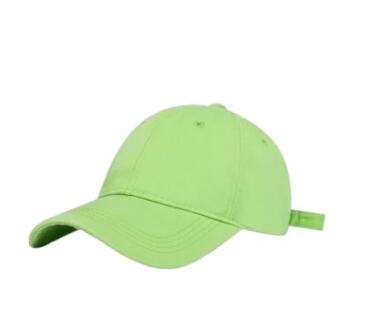The Evolution of Sports Caps: A Stylish Journey Through Design and Materials
2023-12-02
Introduction:
Sports caps have been an integral part of athletic and casual wear for decades, serving as both functional accessories and stylish statements. Over the years, these headpieces have undergone a remarkable evolution in terms of design and materials. From basic headgear to fashion-forward statements, let's explore the fascinating journey of sports caps.
The Early Days:
In the early 20th century, sports caps were primarily utilitarian, designed to provide shade and protection for athletes participating in outdoor activities. Baseball caps emerged as one of the first popular sports caps, with a simple design featuring a rounded crown and a stiff brim to shield players' eyes from the sun. These early caps were typically made from wool or cotton, offering basic functionality without much emphasis on style.
The Rise of Branding:
As sports gained popularity and professional leagues emerged, teams began to recognize the marketing potential of their logos and colors. This led to the integration of team branding into sports caps, with team logos and colors becoming prominent features. The 1970s and 1980s witnessed the rise of the snapback cap, characterized by an adjustable strap at the back, allowing for a customizable fit. This era marked a significant shift towards more personalized and expressive sports cap designs.
Technological Advances in Materials:
In the quest for enhanced performance and comfort, advancements in materials played a pivotal role in shaping the evolution of sports caps. Traditional wool and cotton gave way to synthetic fabrics such as polyester and nylon, offering lightweight and moisture-wicking properties. These materials not only improved functionality but also contributed to the overall durability and longevity of sports caps.
Fashion Forward: The Streetwear Influence
The late 20th century saw a fusion of sports and fashion, leading to the rise of streetwear culture. Sports caps became a staple in street fashion, transcending their athletic origins to become iconic symbols of urban style. High-profile collaborations between sports brands and fashion designers further elevated the status of sports caps, with limited-edition releases and unique designs capturing the attention of fashion enthusiasts worldwide.
Innovative Designs and Features:
As we entered the 21st century, sports cap designs became increasingly innovative and diverse. Flat-brimmed caps gained popularity, challenging the traditional curved brim and adding a modern edge to classic styles. Embroidery, 3D logos, and unconventional materials such as leather and denim became common elements in sports cap design, allowing for a wide range of customization options.
The Sustainable Movement:
In recent years, a growing awareness of environmental sustainability has influenced the sports cap industry. Brands are exploring eco-friendly materials such as organic cotton, recycled polyester, and biodegradable components to reduce their environmental impact. The emphasis on sustainability is transforming the way sports caps are manufactured, ensuring that style and environmental consciousness can coexist.
Conclusion:
The evolution of sports caps reflects not only advancements in design and materials but also the dynamic interplay between sports, fashion, and culture. From humble beginnings as functional headgear to becoming iconic symbols of self-expression, sports caps have come a long way. As we continue into the future, the fusion of technology, sustainability, and creativity is likely to propel sports cap design into new and exciting realms, shaping the next chapter in their stylish journey.



